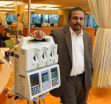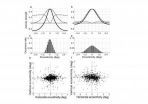(Press-News.org) The United States may lose its leadership role in space to other countries unless it makes research and development funding and processes -- especially in nanotechnology -- a renewed and urgent priority, according to a new paper from Rice University's Baker Institute for Public Policy.
The paper, "NASA's Relationship with Nanotechnology: Past, Present and Future Challenges," investigates how NASA has both guided and defunded cutting-edge nanotechnology development since 1996 at its own research facilities and in its collaborations with university scientists and laboratories. The research was conducted by a team at Rice that included Baker Institute science and technology policy fellow Kirstin Matthews, current Rice graduate student Kenneth Evans and former graduate students Padraig Moloney and Brent Carey. The paper sheds light on a broad field that holds tremendous potential for improving space flight by reducing the weight of spacecraft and developing smaller and more accurate sensors.
This area of research, however, saw a dramatic cutback from 2004 to 2007, when NASA reduced annual nanotechnology R&D expenditures from $47 million to $20 million. NASA is the only U.S. federal agency to scale back investment in this area, the authors found, and it's part of an overall funding trend at NASA. From 2003 to 2010, while the total federal science research budget remained steady between $60 billion and $65 billion (in constant 2012 dollars), NASA's research appropriations decreased more than 75 percent, from $6.62 billion to $1.55 billion.
The authors argue that the agency should restructure, refocus and strengthen its R&D programs.
"The United States currently lacks a national space policy that ensures the continuity of research and programs that build on existing capabilities to explore space, and that has defined steps for human and robotic exploration of low-Earth orbit, the moon and Mars," Matthews said. "With Congress and the president wrestling over the budget each year, it is vital that NASA present a clear plan for science and technology R&D that is linked to all aspects of the agency. This includes connecting R&D, with nanotechnology as a lead area, to applications related to the agency's missions."
The authors said that to effectively engage in new technology R&D, NASA should strengthen its research capacity and expertise by encouraging high-risk, high-reward projects to help support and shape the future of U.S. space exploration
"Failure to make these changes, especially in a political climate of flat or reduced funding, poses substantial risk that the United States will lose its leadership role in space to othercountries — most notably China, Germany, France, Japan and Israel — that make more effective use of their R&D investments," Matthews said.
###
For more information or to schedule an interview with Matthews, Evans, Moloney or Carey, contact Jeff Falk, associate director of national media relations at Rice, at jfalk@rice.edu or 713-348-6775.
Related materials:
"NASA's Relationship with Nanotechnology: Past, Present and Future Challenges" paper: www.bakerinstitute.org/policyreport54.
Kirstin Matthews bio: http://bakerinstitute.org/personnel/fellows-scholars/kmatthews.
Follow Rice News and Media Relations via Twitter @RiceUNews
Founded in 1993, the James A. Baker III Institute for Public Policy at Rice University in Houston ranks among the top 20 university-affiliated think tanks globally and top 30 think tanks in theUnited States. As a premier nonpartisan think tank, the institute sponsors more than 20 programs that conduct research on domestic and foreign policy issues with the goal of bridging the gap between the theory and practice of public policy. The institute's strong track record of achievement reflects the work of its endowed fellows and Rice University scholars. Learn more about the institute at www.bakerinstitute.org or on the institute's blog, http://blogs.chron.com/bakerblog.
END
Fairbanks, Alaska—University of Alaska Fairbanks scientists have identified what they think is the ancestral trait that allowed for the evolution of air breathing in vertebrates. They will present their research at the 42nd annual meeting of the Society for Neuroscience Oct. 17 in New Orleans.
"To breathe air with a lung you need more than a lung, you need neural circuitry that is sensitive to carbon dioxide," said Michael Harris, a UAF neuroscientist and lead researcher on a project investigating the mechanisms that generate and control breathing.
"It's the neural ...
BOSTON—In what they say is a promising and highly selective treatment strategy, scientists at Dana-Farber Cancer Institute have safely shut down breast cancer and a form of leukemia in mice by targeting abnormal proteins to which the cancers are "addicted," according to a new study.
Even though the investigators genetically silenced the proteins or blocked them with a drug in normal as well as cancerous tissues, the animals remained healthy, they report in the Oct. 16 issue of the journal Cancer Cell. Peter Sicinski, MD, PhD, of Dana-Farber is the paper's senior author.
The ...
CHICAGO --- A team of Northwestern University scientists will meet with Environmental Protection Agency (EPA) administrators in Washington D.C. Oct. 18 to advocate for important changes in the agency's guidelines for reproductive health research.
"The problem is current research assessing the risk of toxins on reproductive health is not being uniformly investigated in both sexes and across the lifespan," said Kate Timmerman, program director of the Oncofertility Consortium of Northwestern University, who will be one of the scientists meeting with the EPA. The reproductive ...
Hailed by some as the "end of race as we know it" and the beginning of a "post-racial" America, the 2008 election of Barack Obama sparked a measurable bump in feelings of political empowerment among black Americans.
But those sentiments have faded considerably over the last year or so, according to a new analysis of political survey data, with the sharpest declines in perceived political power coming among blacks who identify themselves as conservatives or "born again" Christians.
"The election of a black American to the U.S. presidency did seem to empower African Americans, ...
BUFFALO, N.Y. -- A study by the University at Buffalo shows for the first time that obese males ages 14 to 20 have up to 50 percent less total testosterone than do normal males of the same age, significantly increasing their potential to be impotent and infertile as adults.
The paper was published online as an accepted article in Clinical Endocrinology.
The authors are the same researchers in the University at Buffalo's School of Medicine and Biomedical Sciences who first reported in 2004 the presence of low testosterone levels, known as hypogonadism, in obese, type ...
AUGUSTA, Ga. – A common birth control device is effective in treating early-stage endometrial cancer in morbidly obese and high-risk surgery patients, said Georgia Health Sciences University Cancer Center researchers, and could lead to a cost-effective treatment for all women with this cancer type.
Endometrial cancer, which starts in the lining of the uterus, is the third most common gynecologic cancer, striking more than 47,000 American women every year, particularly the obese. "Total hysterectomy, sometimes with removal of lymph nodes, is the most common treatment ...
Amsterdam, NL, October 16, 2012 – Little is known about oculomotor function in amblyopia, or "lazy eye," despite the special role of eye movements in vision. A group of scientists has discovered that abnormal visual processing and circuitry in the brain have an impact on fixational saccades (FSs), involuntary eye movements that occur during fixation and are important for the maintenance of vision. The results, which raise the question of whether the alterations in FS are the cause or the effect of amblyopia and have implications for amblyopia treatment, are available ...
PULLMAN, Wash.— Washington State University researchers have found that viruses will join forces to overcome a plant's defenses and cause more severe infections.
"These findings have important implications in our ability to control these viruses", says Hanu Pappu, Sam Smith Distinguished Professor of Plant Virology and chair of WSU's Department of Plant Pathology. "Mixed infections are quite common in the field and now we know that viruses in these mixed infections are helping each other at the genetic level to overcome host defenses and possibly lead to the generation ...
Though not often considered beyond the plasma television, small-scale microplasmas have great utility in a wide variety of applications. Recently, new developments have begun to capitalize on how these microplasmas interact with liquids in applications ranging from killing bacteria for sterilizing a surface to rapidly synthesizing nanoparticles.
An interdisciplinary collaboration between researchers at Case Western Reserve University and the University of Notre Dame has revealed a critical interaction that is occurring at this plasma-liquid interface in that the electrons ...
No matter which way you look at it, rejection hurts. Experiencing rejection from a boss, a friend, or a partner is difficult enough for many adults to handle. But adolescents, who are dealing with the one-two punch of biological and social change, may be the most vulnerable to its negative effects.
In a new study published in Clinical Psychological Science, a journal of the Association for Psychological Science, researcher Michael Murphy and colleagues examine the human immune response as a potential link between social stressors like rejection and later mental and physical ...



